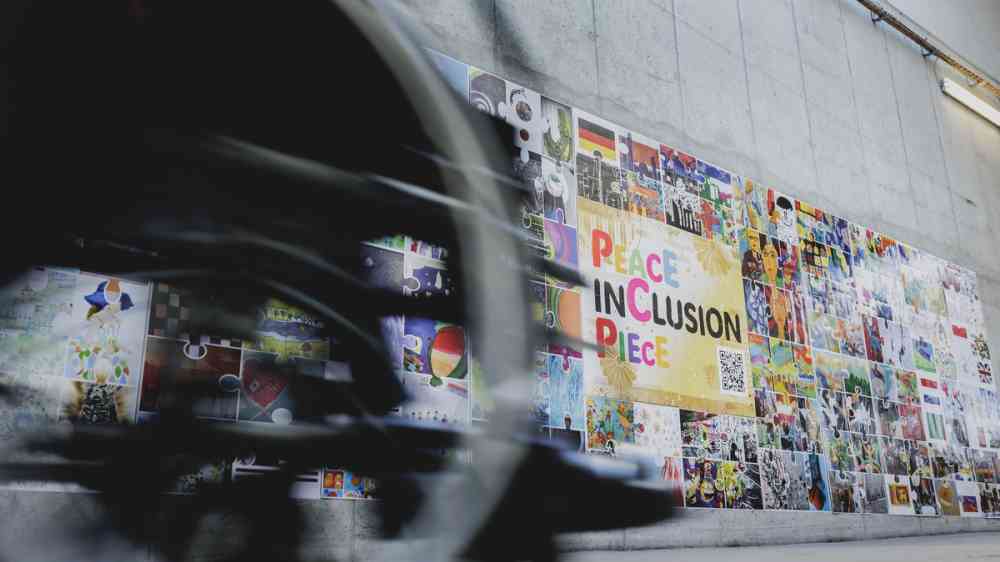We must get disability-inclusive disaster risk reduction right — here are 5 ways to deliver results

We’ve done well in raising the profile of disability-inclusive disaster risk reduction — now it’s time to deliver results on the ground.
As Sendai implementation picks up pace, I suggest five areas that could offer lasting wins for persons with disabilities – a group that comprises 15% of the global population.
In early April 2025, I had the privilege of attending the Global Disability Summit in Berlin, which was hosted by the Governments of Germany and Jordan. Held at Station Berlin, at historic Potsdamer Platz, the event brought together more than 4,000 participants from across the world to explore how we can put persons with disability at the heart of every aspect of human life, to ensure that they are fully included in our collective flourishing.
The atmosphere was truly inspiring, charged with hope, optimism and a palpable “can do” attitude. The phrase, “nothing about us, without us” rang out clearly as a powerful, heartfelt dictum. I was particularly glad to see disaster risk reduction (DRR) featuring prominently at the Summit.
While the global, national, and local discourse on the topic has come a long way, specific on-the-ground actions still need to catch up. As one speaker said during the Opening Ceremony, we need to cultivate a sense of “radical curiosity about the experiences of persons with disability.”
We’ve seen in several recent disasters that mortality and morbidity rates among persons with disability have been several times higher than the general populace – a reminder of the urgent work ahead. In the remaining five years of the Sendai Framework, if we pursue the following five strands with urgency, we will show the concrete results that we need:
1. Embed disability inclusion in DRR plans and strategies
A decade into the Sendai Framework’s implementation, the most progress has been on Target E – plans and strategies for disaster risk reduction. Yet many of these still fall short of addressing the specific needs and capacities of persons with disabilities.
These strategies must be informed not only by data and evidence – such as census information on persons with different types of physical and intellectual disabilities – but also by the lived experience of persons with disabilities themselves. To make this happen we need to build an institutional culture that is responsive to specific individual needs, especially those of the most vulnerable people.
2. Gather data on disaster impacts on persons with disabilities
The Sendai Monitor calls for disaster loss data that is disaggregated by gender, age, and disabilities. However, only a few dozen countries presently collect and report such data for persons with disabilities. In some data-scarce contexts, this may be a challenging task – especially when the baseline data on persons with disabilities don't exist.
However, we must start somewhere. If we begin collecting data on disaster impacts on persons with disabilities now, in a few years this will throw up rich insights that can help us refine our strategies for persons with disabilities.
3. Move from policies and guidelines to specific actions:
In recent years, several countries – and sub-national bodies – have developed and adopted policies and guidelines for disability-inclusive disaster risk reduction – a close-to-home example (for me) is India, with guidelines at the national level and the sub-national level(Kerala State as one instance).
What specific actions flow from these instruments? In the context of early warning systems, we’ve seen examples of standard operating procedures developed to ensure a suite of disability inclusive actions – from accessible warning and inclusive evacuation plans to suitable evacuation infrastructure. However, such concrete actions should also extend to address comprehensive disaster risk reduction efforts.
Let’s take flood risk management as an example: if a community has to relocate away from a flood-prone settlement, how can it ensure that the new location is suitable for persons with disabilities? Or if houses are being retrofitted and being raised on stilts, how can these meet the needs of persons with disabilities? Similarly, what does it mean for persons with disabilities to “build back better” after disasters? We need to stretch our imagination of risk reduction to turn policies and guidelines into concrete inclusive actions.
4. Extend access to assistive technologies
The last decade has seen great progress in assistive technologies for persons with disabilities. Rapid advances in fields such as AI, neurosciences, and synthetic biology promise an even brighter future. But access to these technologies is highly unequal – between men and women, between developing and developed countries, between rural and urban areas, and so on.
Governments must take a proactive policy stance to address these inequalities. Could disability-disaggregated census data be used to incentivize both public and private sector investments in developing assistive technologies that are cost-efficient and affordable?
5. Ask: is it really working?
And finally, we must find smarter ways to asses our impact. A good start would be for every post-disaster “after action review” to include this key question for persons with disabilities: “Did the systems work for you?”
At UNDRR, we have made disability-inclusive DRR a priority. In my recent missions to Australia, Finland, Fiji and Germany, I was struck by deep commitment to this cause – and a rising sense of urgency – from governments. In Berlin, I had rich discussions with ministers from Italy and Scotland – both are serious about making real changes in their countries.
UNDRR has endorsed the Amman-Berlin Declaration, the fruit of the Global Disability Summit. This declaration calls for all international development programmes to be inclusive of and accessible to persons with disabilities, and for at least 15% of country-level development programmes to explicitly pursue disability inclusion as an objective: "15 percent for the 15 percent."
We are making steady progress on disability inclusion in disaster risk reduction. With accelerated action and wider mobilization, transformational change is within reach!